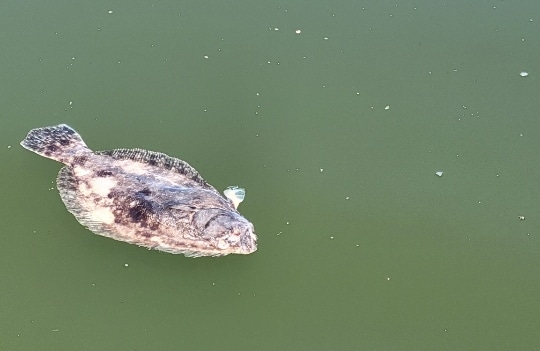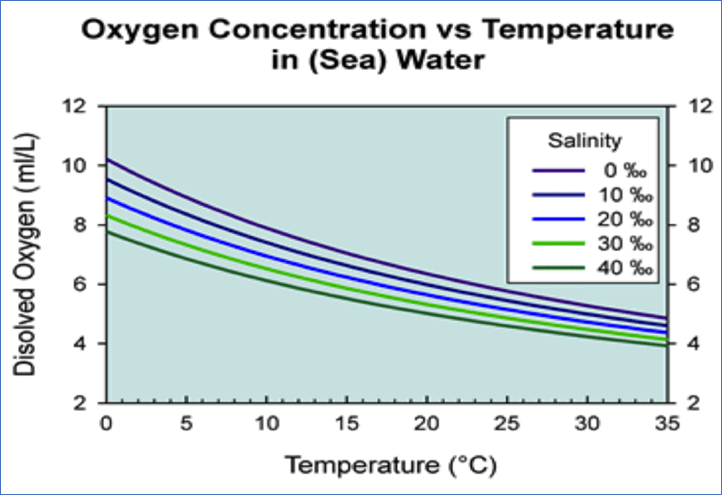Director’s Note: Fish kill in Palma Sola Bay
Last time I wrote you all, I included a picture of a live gag grouper (Mycteroperca microlepis) which I used to make the point that Sarasota Bay acts as a nursery for species of fish that are caught as adults out in the open waters of the Gulf of Mexico. Well, I’ve got another fish photo today, but it’s of a dead flounder this time. This is one of several fish that have died up in Palma Sola Bay over the past few days. A long-time resident up there sent me this picture earlier today.

Jay and I were out in Palma Sola Bay last Friday, quantifying the amount of seagrass and macroalgae at four of the five randomly chosen locations where we collect this information twice a year. At each transect, we lay out a 50-meter transect line, which we have marked at 10-meter intervals. Last Friday, there was a substantial phytoplankton bloom in parts of Palma Sola Bay, such that visibility was about a foot, and the stations could only be found by holding onto the line and “feeling” for the cable tie that marked each station. Not fun, but we got it done.
This phytoplankton bloom is likely in response to both nutrient supply and water temperatures, as algal growth rates typically respond positively to increases in both of those factors. But the fish kill was likely due to low oxygen levels in the water, not some toxin, and not red tide. A law enforcement officer with the Florida Fish and Wildlife Conservation Commission (FFWCC) was informed of the fish kill, and FFWCC recorded a dissolved oxygen level of 0.8 mg / liter, which is 50% lower than the level that is typically invoked as able to cause fish kills.
Warm water holds less oxygen, and higher salinities (due to below average rainfall) exacerbate this phenomenon. The graphic below shows that the oxygen content decreases with increasing water temperatures, and that this affect is additionally and adversely impacted by higher salinities.

Basically, the highest oxygen content is in cold, low salinity waters. We are at the opposite range of that for both temperatures and salinities. According to the National Oceanic and Atmospheric Administration (NOAA), the water temperature in Sarasota Bay just offshore of Cortez is about 93 degrees Fahrenheit today, and the salinity is about 36 parts per thousand. That is very warm, very salty water. We are basically in the very lower right-hand corner of this plot right now – the condition with the lowest amount of oxygen.
This graph is for PURE water, not water with a phytoplankton bloom! That means, after a couple of hours of darkness, the respiration due to all that algae in the bay would further decrease oxygen levels from what was already a very low capacity of the water support oxygen levels. Thus, the subsequent fish kill.
The very low levels of rainfall this summer, and the VERY warm water temperatures are adding additional stresses to our marine ecosystems, on top of the impact of nutrient enrichment. Unfortunately, these conditions are likely to continue for the near future, perhaps weeks or even months. Which means, this might not be the last time I let you know that we are experiencing a fish kill in Sarasota Bay.
So what do we do about it? Well, I’d love to say we could wave a magic wand and cool off our planet, but that aint gonna happen any time soon. So, we’re left with trying to modify the one thing that we can act on, locally – reducing our nutrient footprint. That’s not all we should be doing, but it’s what we need to be doing.
